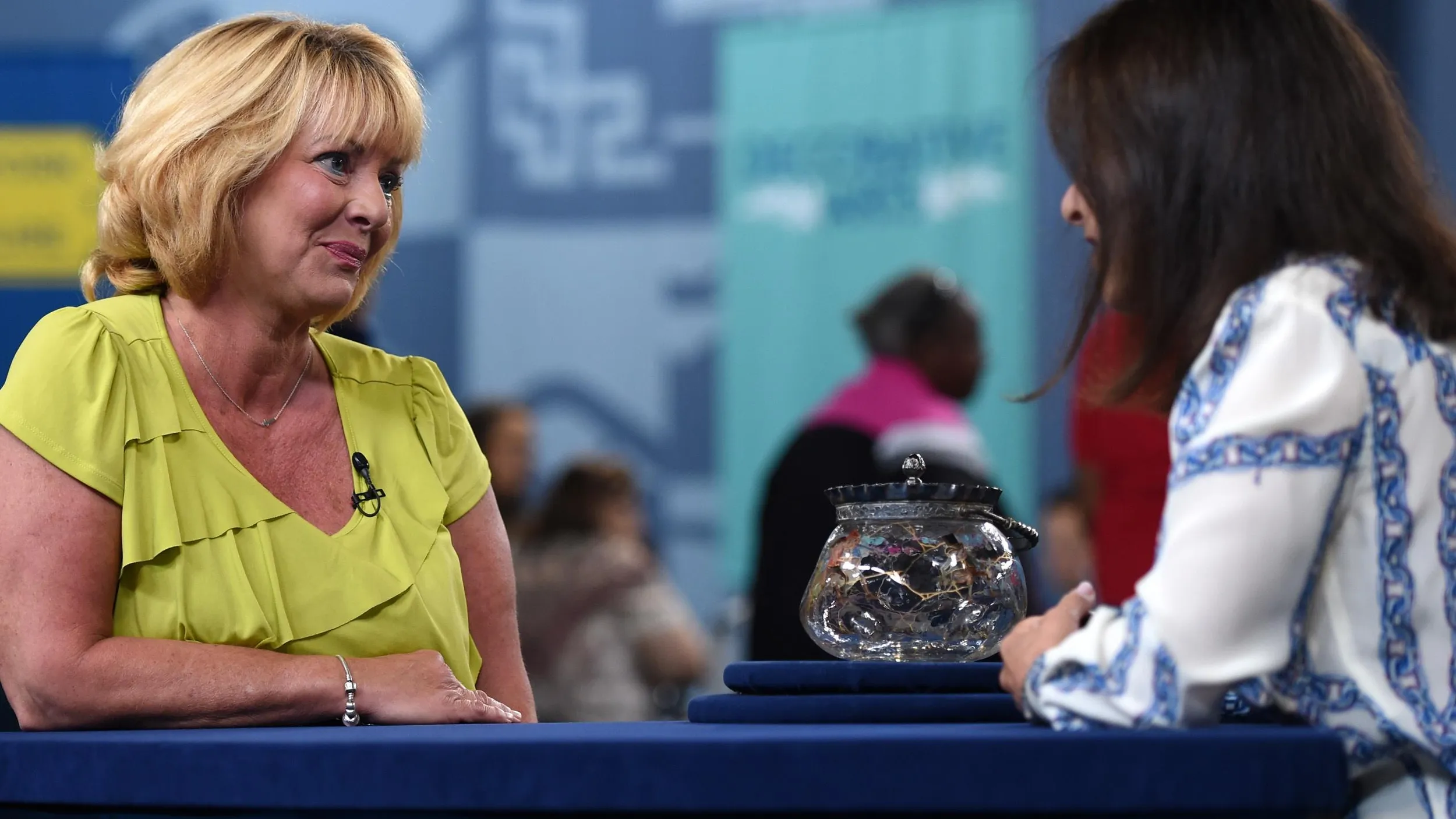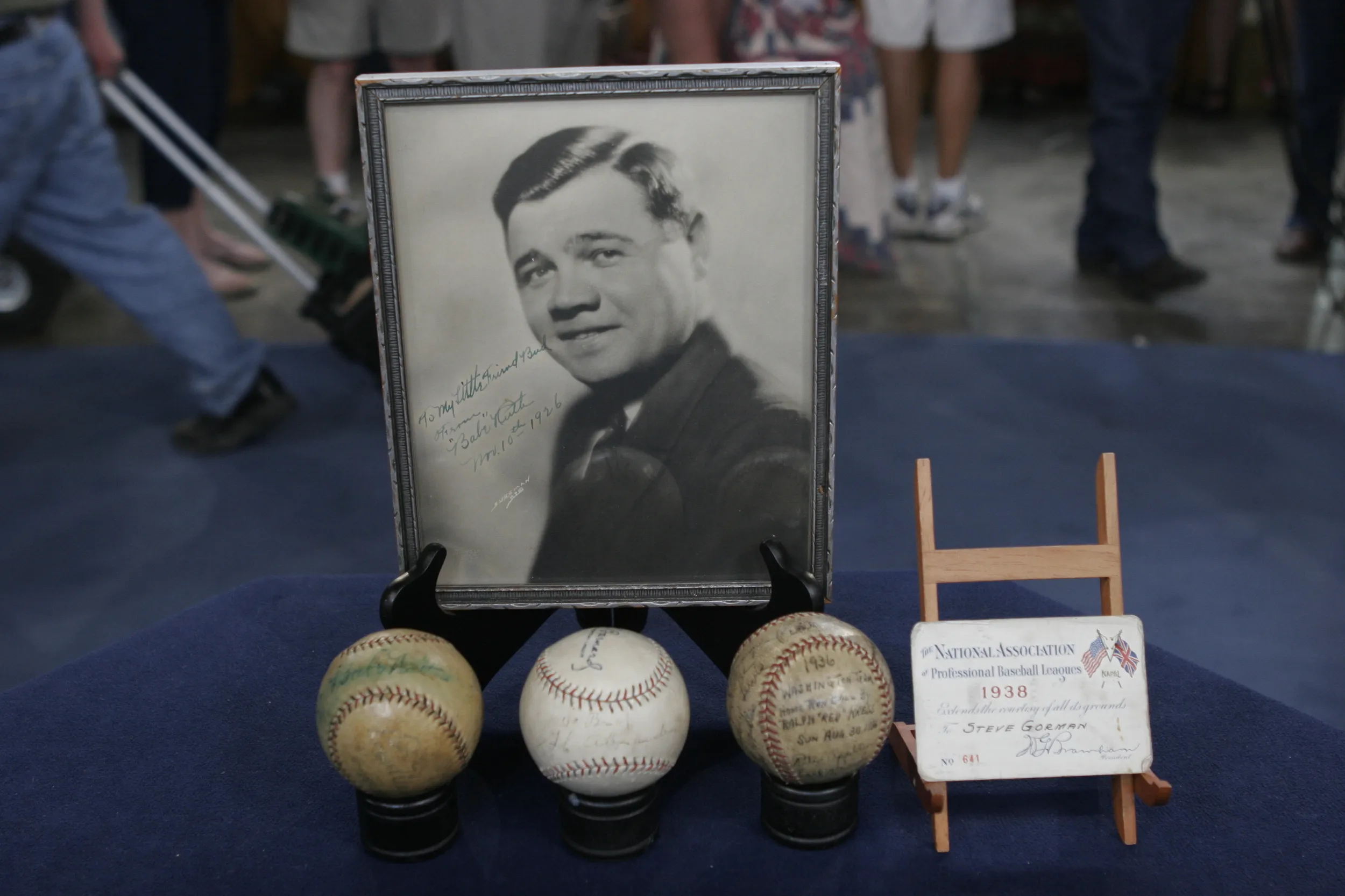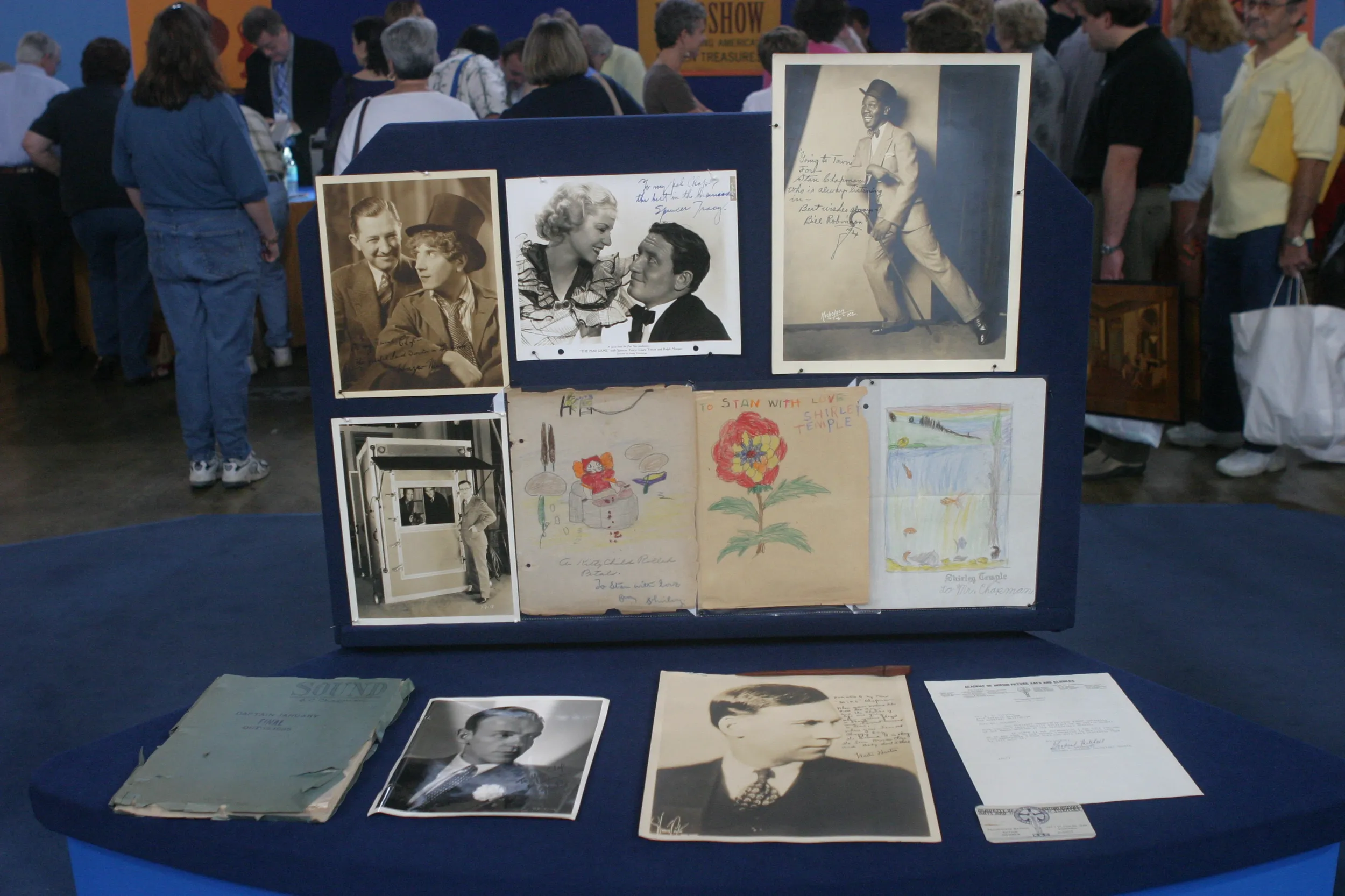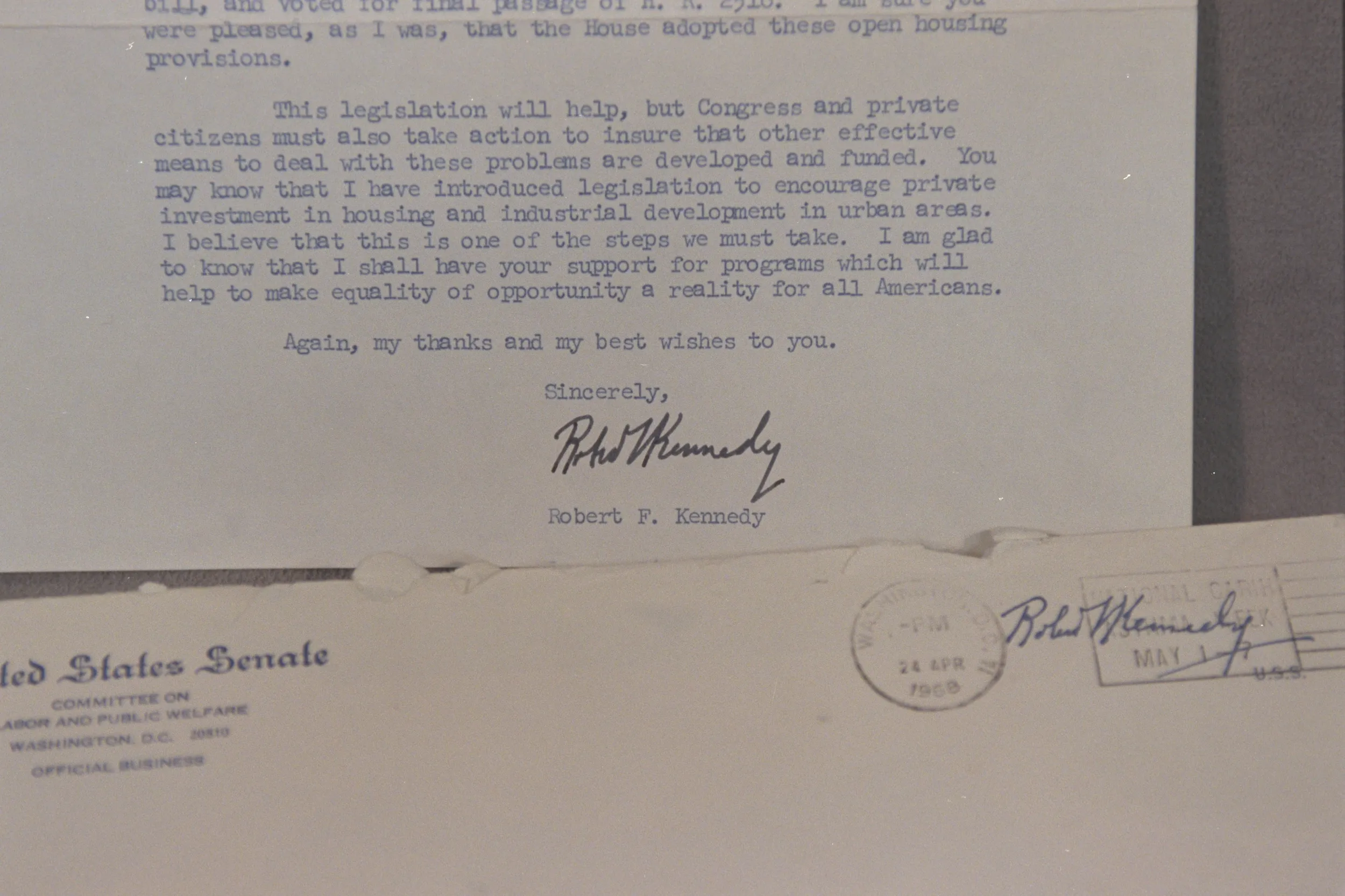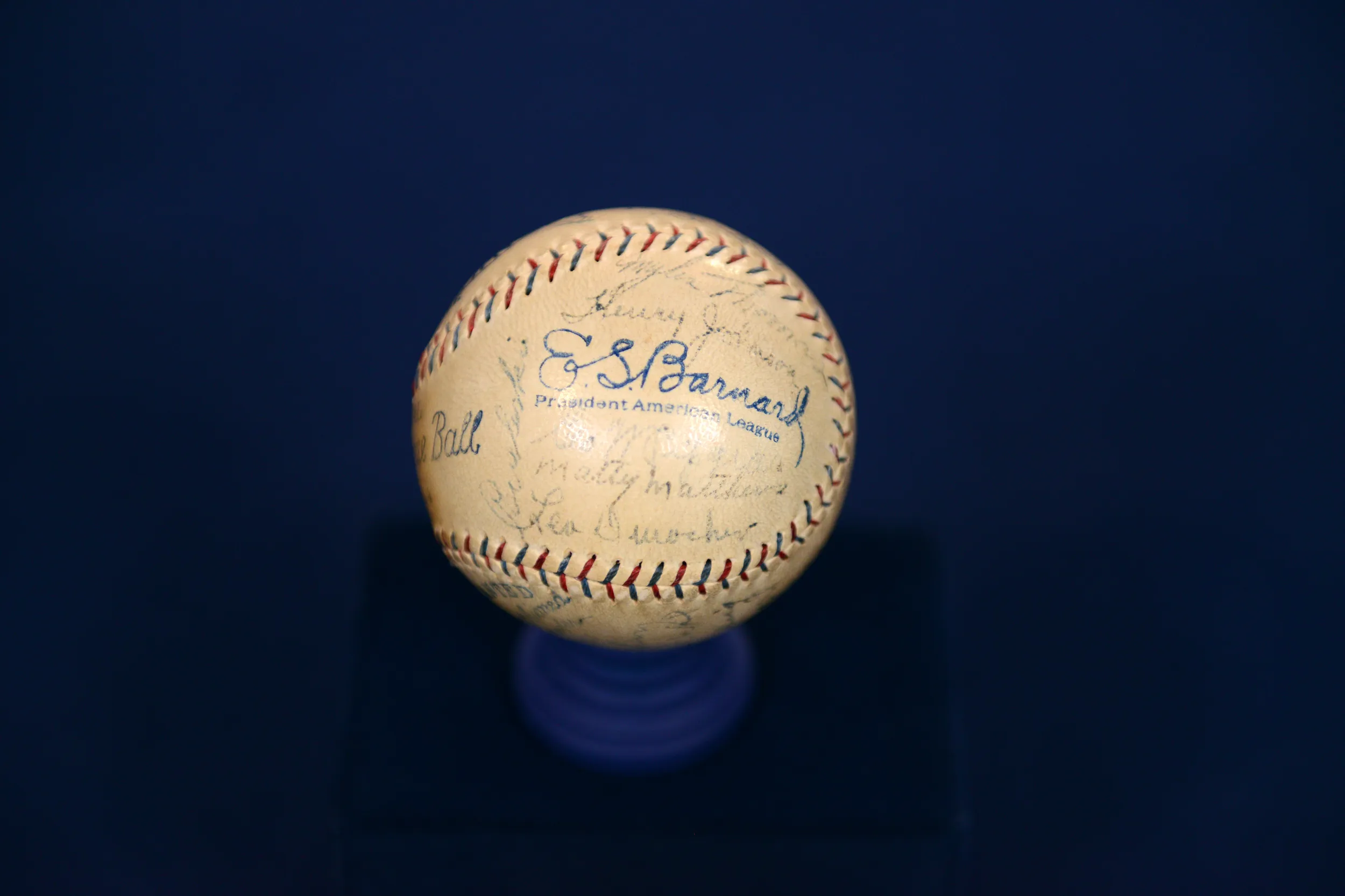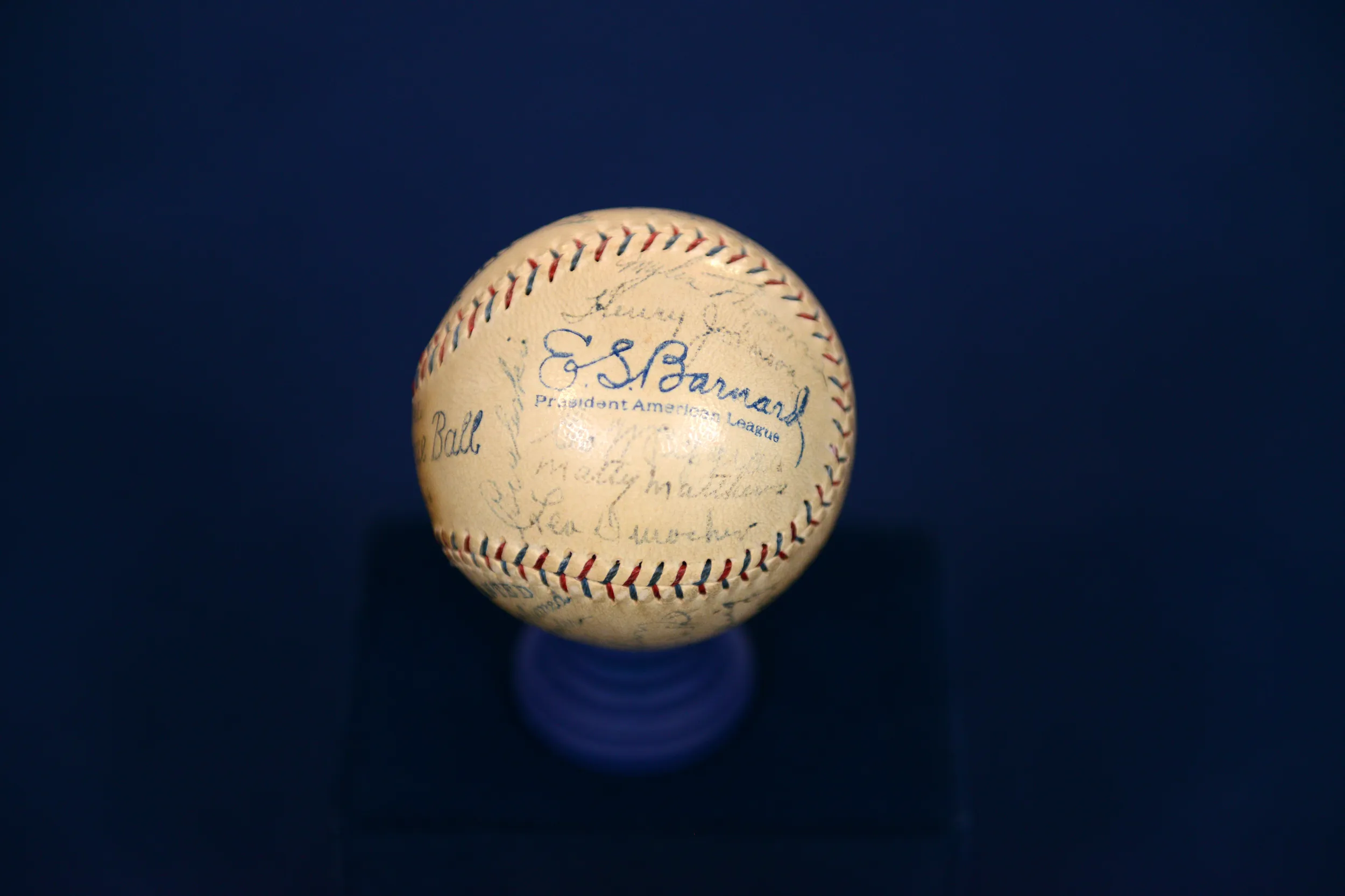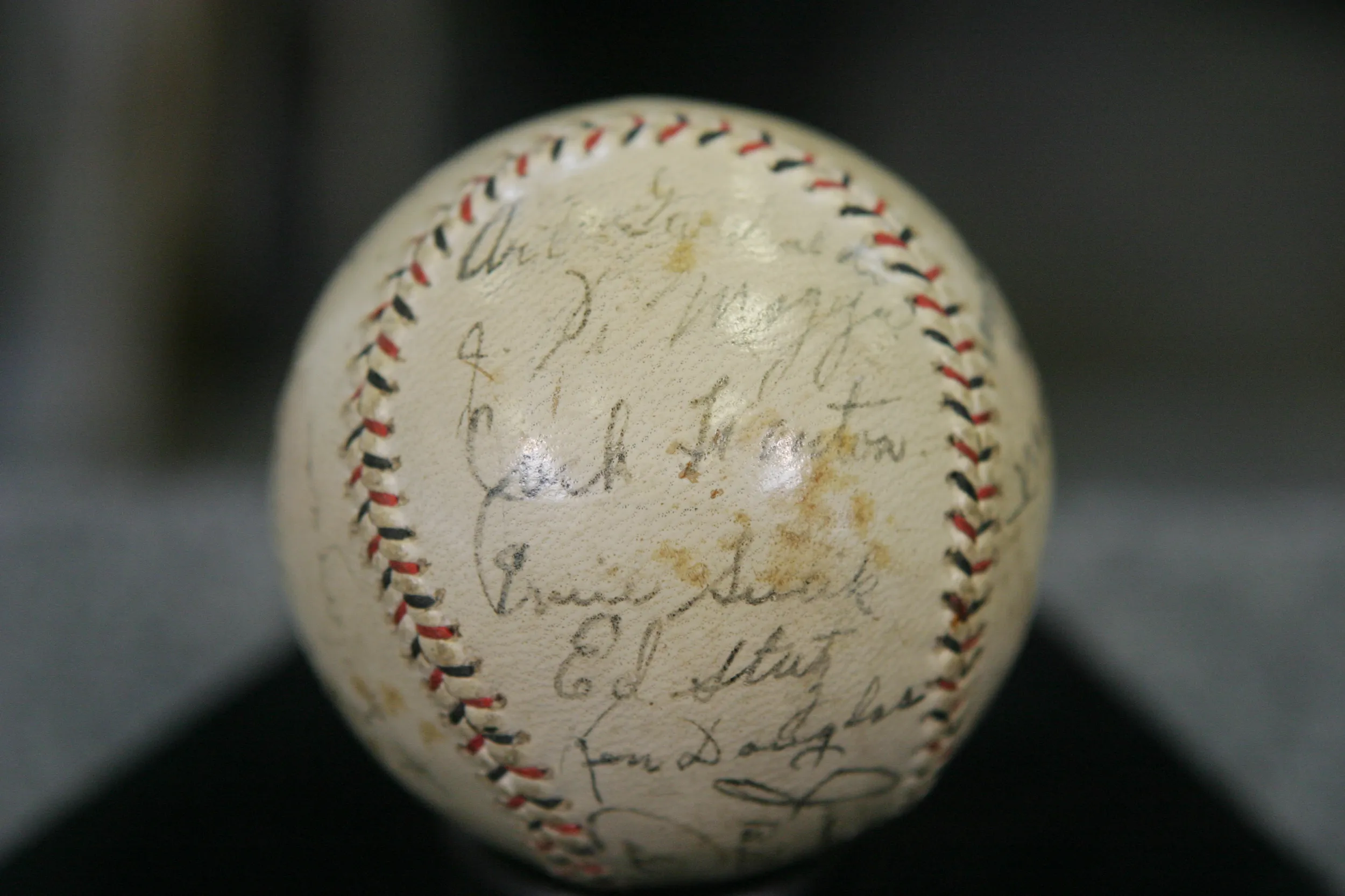GUEST: Well, it's a baseball that was left to me by my next-door neighbor when he passed away back in September of 2013. He told me he got it from his uncle, who had property next to Fenway Park in Boston. His uncle Harry would allow visiting teams to come in and dove-hunt on his property. I was told this was a thank-you from the Yankees for letting them dove-hunt there.
APPRAISER: And we don't know exactly when it was acquired.
GUEST: Right, I don't know when he got it, but I do know my neighbor got it in 1959, when his uncle Harry passed away. And this was the one item, the only item he got from him.
APPRAISER: Okay, what else do you know about the baseball?
GUEST: Well, I did some research on it. I know it's signed by 22 members, and I tried to find all of the names on one team at one, during one year. And 1928 was the closest I could come up with. I know it's signed by 22 members of the team, including Babe Ruth, and Lou Gehrig, Cy Moore, and several others.
APPRAISER: And that's what's so nice, we like to see in a team ball. You always want to see at least 19 signatures to be considered a complete team ball. 21 and 22 is about the average. You get over that, and then it becomes a more exceptional piece.
GUEST: Wow.
APPRAISER: In this case you have 22 signatures on the ball. And one that we couldn't identify at first.
GUEST: Right.
APPRAISER: We talked about Matty Matthews.
GUEST: Yes, Matty Matthews.
APPRAISER: So we have 21 Yankees and Matty Matthews. Matty Matthews, we found, was a New York-based world welterweight champion.
GUEST: Oh, wow.
APPRAISER: And so most likely was in the clubhouse at the time, in the dugout— must have been friends with the players.
GUEST: Okay, well, that's interesting.
APPRAISER: A little bit of a rarity there to have that on there. And we have one signature missing, and that's manager Miller Huggins.
GUEST: Yeah, I noticed that, right.
APPRAISER: But it's still a great example for a 1928 New York Yankees team signed ball. The signatures, we look at them condition-wise. The ball's been well-preserved, no shellac or varnish on it. Most signatures rate very good to excellent, some even excellent, and we have Babe Ruth right on the sweet spot, as so many of them have. It's a great two-color stitch, Harridge official American League ball. And condition is just about as nice as we find. Do you have any idea about the value on the ball?
GUEST: I don't know. You know, I did a little bit of research after he passed away, after I actually acquired the ball. I wasn't finding too much about it. You know, I did find at an auction house a year before, they sold one that had 20 signatures—this one has 22—for about $150,000. So that's as close as I could get to, yeah.
APPRAISER: Well, your ball at auction would sell for between $25,000 and $35,000.
GUEST: Oh, wow, okay. All right, that's excellent, that's excellent. Like I said, it's not going anywhere.
APPRAISER: And the reason for that is twofold.
GUEST: Yes.
APPRAISER: So, first of all, the auction result you were referencing was for a 1927 Yankees ball, and here we have a 1928 Yankees ball. So the 1927 Yankees, of course, considered the best team in history.
GUEST: That's what I saw.
APPRAISER: The 1928 team also won the World Series, swept the Cardinals in four games. But it's the difference there between a '27 and a '28. That's the first part of it. The second part of it is, that auction result you saw that was almost $150,000 was also a ball that came from Earle Combs' family.
GUEST: Oh, all right.
APPRAISER: So it was from one of the actual team members' estate. And we talk about that all the time. If you have an object, whether it's a ball, a bat, a team photo, any time it was that player's personal item, the value goes up exponentially.
GUEST: Interesting.

